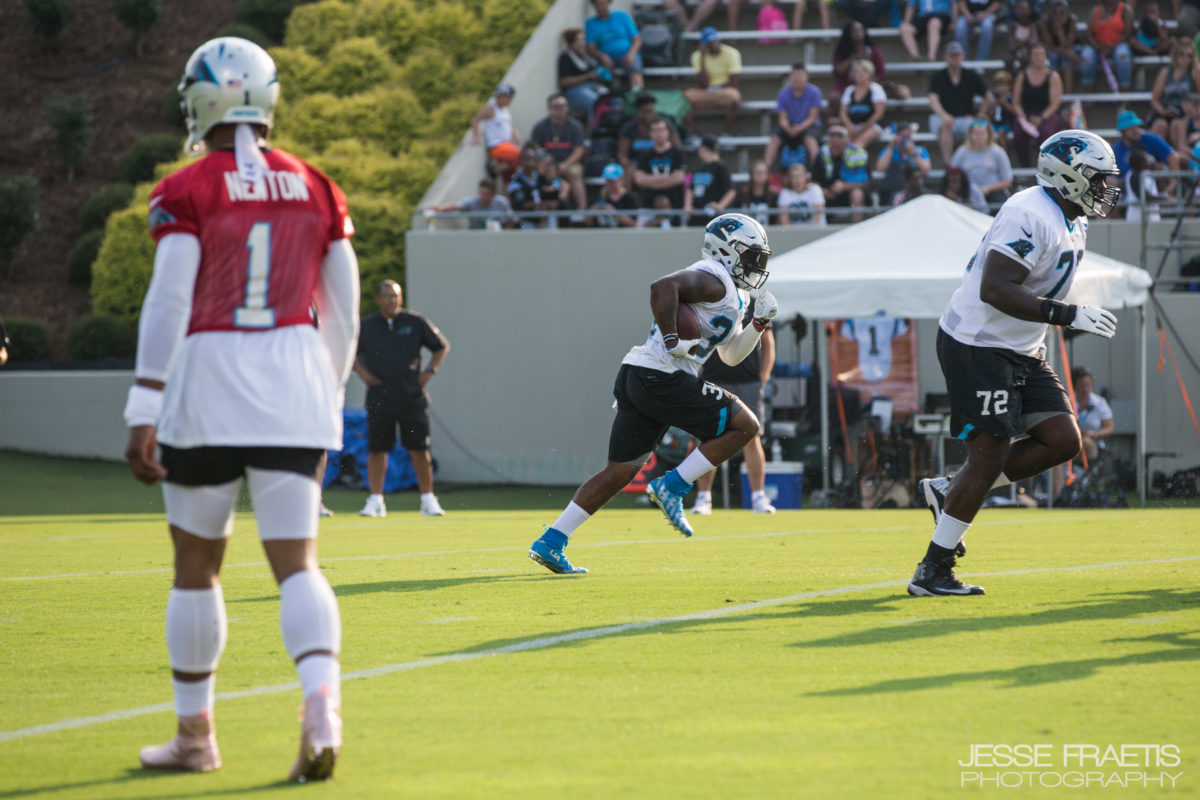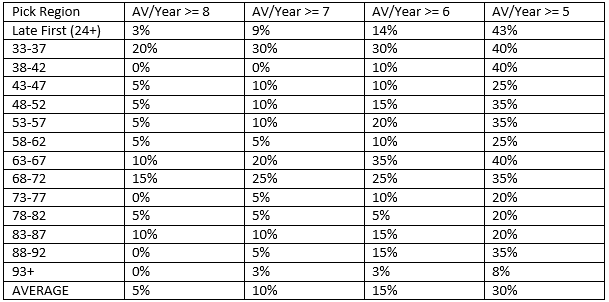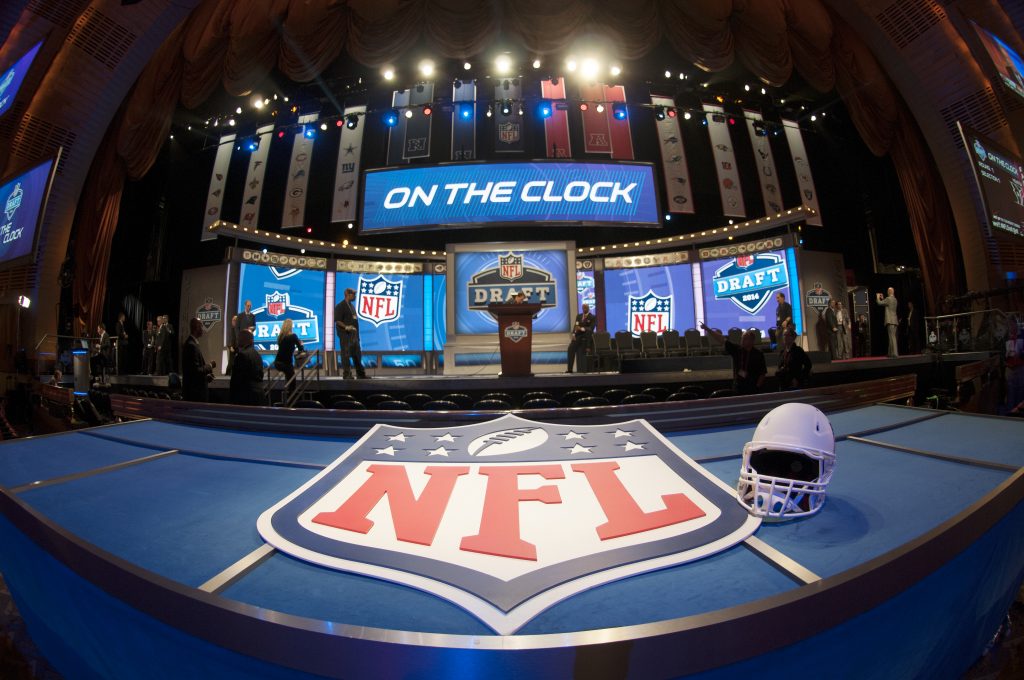The Panthers will be faced with a multitude of options when the clock starts on the 24th pick of the 2018 NFL draft. While it is perhaps easier said than done, one option that is possibly not being discussed enough is that of trading down; there are several reasons why a team might look to trade down, and many of those will be dealt with here, but first it seems prudent to examine what it is the Panthers should be looking to achieve in the 2018 draft.
Immediate Impact
The Panthers are in a position to compete now with several captains in the final year of their careers and Cam Newton securely in his prime; the four significant pieces are entering what is likely to be their final seasons and although Newton is far from the twilight of his career, the Panthers’ championship window won’t last forever. That doesn’t mean that the Panthers need to resort to a Rams-like all-in approach to roster building, but rather that the Panthers are not in a rebuilding phase where simply adding assets should be seen as a success. What this likely means is that the Panthers would struggle to justify spending a first round pick on certain positions – quarterback and linebacker to name just a couple – so who could they target in the first round?
While outside linebacker, tackle and center could all be targets in the second round or later, it is hard to imagine them spending a first-round pick on a player who will sit behind a veteran for their entire first season; the only positions where it seems likely that a rookie will stand a good chance of coming in and contributing significantly are running back, wide receiver, offensive guard, defensive end, cornerback and free safety. But are there players at those positions worth a first round grade?
The short answer is yes, but not many, at least by my estimation. Of course, the number of players who each team and scout will have rated as worthy of a first- round pick will vary, but the numbers suggest that there are likely only around twenty players in any given draft who produce at a first-round level, with that being an absolute upper limit. Based on the tape I have seen thus far, the only players at those five positions who I have graded as first round picks are Saquon Barkley, Isaiah Wynn, Josh Jackson, Bradley Chubb and Marcus Davenport. Justin Reid is very close to the first/second border and if the Panthers think Connor Williams can play guard, then he would also make that list; others might suggest another name or two, but the picture should be clear that the list of players the Panthers should consider taking at 24 isn’t hugely long.
Whatever the length of this list, there is a very good chance that none of these players fall to the Panthers at 24, and should this happen the Panthers will then be faced with a simple choice: reach for a player or trade down. This article certainly doesn’t want to suggest that the Panthers should trade down at all costs, if any of the above players fall to 24 then the Panthers shouldn’t hesitate to pull the trigger, but rather that it is better to trade back and collect picks than to reach on a player who doesn’t merit the pick.
But Is There Room On The Roster For Lots Of Picks?
Yes.
Really?
Yes, really.
Even though the Panthers are a very talented team, they are actually quite poor in terms of depth, and they have a number of older players they will need to replace over the next season or two; that lack of depth has come to hurt them in each of the last two seasons, and the Panthers would be foolish not to think that they need to add players at a number of positions. That doesn’t mean that all of these positions need to have top-50 picks spent on them, but that the Panthers could well add more players than they currently have picks.
It is not beyond imagining that the Panthers need to draft the following: a quarterback, a running back, a tight end, a receiver, two offensive linemen, a defensive end, a linebacker, a corner and a safety or two. The Panthers currently have eight picks and there are eleven positions on that list – they could certainly do with adding another two or three.

So What Might Trading Down Actually Achieve?
The obvious answer is that it gives the Panthers more picks, which is valuable both in terms of allowing the Panthers to address more needs and in terms of giving them more chances to hit on multiple prospects. The number of players drafted in the back end of the first who go on to become quality starters in the NFL is very small, of the 62 drafted from the 24th onward since 2011, only SIX have gone on to average an AV of 8 or more per season for their careers. Of the 35 players taken with the first five picks of the second round over that period the number to reach that same level of success is five; a rate of 14%. This is not to suggest that the Panthers are likely to get a better player in the early second than the late first, this is fundamentally illogical, but what it does suggest is that the drop-off in talent is not hugely significant, and unless there is a player a team loves in the late first, they can often do just as well picking early in the second.
For the Panthers in particular, those additional picks could be used to add a number of players who the Panthers could then look to develop with the hope that some can contribute in rotational roles in the short-term. This doesn’t mean every pick has to be like this, but rather that should the team have a handful of second-day picks, they could afford to use some on players who don’t need to contribute from day one. With a number of aging players going into the final year of their contracts, drafting a tight end who would develop behind Olsen or a defensive end who could develop as part of the rotation or a running back who could develop alongside McCaffrey and Artis-Payne would make a lot of sense.
Even the best evaluators struggle to hit at a high percentage on the second day of the draft, but the success rate is still decent throughout much of the draft, especially in terms of decent players rather than immediate starters. Over the same 2011-2017 time period, nearly 13% of players taken in the first ten picks of the third round have managed an approximate value/year of 7 or more, which represents a top-10 player on an average roster. Should the Panthers be able to turn the 24th pick into a good player and two decent ones, then that should undoubtedly be seen as a success.

What this shows is that late first-round picks show a below-average likelihood of developing into quality contributors, the only area where they are above average is in terms of not being complete busts. It also suggests that the most valuable picks are those at the beginning of the second and the third. While it is easy to get lost in these numbers, there is one very clear takeaway; having multiple day two picks is more valuable than one late first rounder unless there is a prospect who falls anomalously low. The 2013 draft is a great example of this, as here the numbers are completely thrown off by Travis Frederick and DeAndre Hopkins both falling to the late first.
The other positive for the late first-round pick is the infamous fifth-year option, which locks the draft pick into a team-decided option to keep the pick (such as Shaq Thompson after this season) at a more relatively team-friendly cap number as opposed to being eligible for a long-term, big-money deal a year earlier.



